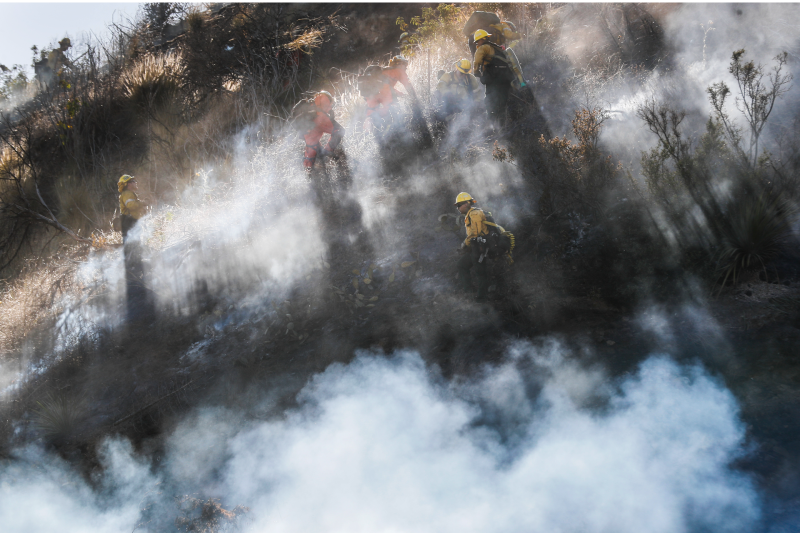Even in Alaska, forecasters have warned that many fires in the southwest corner of that state have experienced exceptional growth over the last week, which is unusual for that area. Southwest Alaska normally experiences shorter periods of high fire danger since intermittent rain can provide relief, but since mid-May the region has been hot and windy, helping to dry out vegetation.
A tundra wildfire has moved closer to the Alaska Native community of St. Mary's, but mandatory evacuations have not been ordered. Firefighters are working to strengthen primary and secondary fire lines protecting St. Mary’s and other nearby communities.
In California, evacuation orders were in place Monday for remote homes near a wildfire that flared up over the weekend northeast of Los Angeles near the Pacific Crest Trail in the San Gabriel Mountains.
The blaze saw renewed growth Sunday afternoon and by nighttime had scorched about 1.5 square miles of pine trees and dry brush, officials said.
Aside from mandatory evacuations for some residents, the remainder of the mountain town of Wrightwood, with about 4,500 residents, was under an evacuation warning. Several roads also were closed.
To the west in Los Angeles County, firefighters quickly corralled a wildfire that erupted Sunday in the foothills above Duarte. No homes were threatened.
Fire conditions were elevated because of warm and dry weekend weather across Southern California. Monday was expected to be cooler, but another heat wave was expected at midweek, the National Weather Service said.
In Northern California, a 50-mile stretch of State Route 70 was closed indefinitely on Monday after mud, boulders and dead trees inundated lanes during flash floods along a wildfire burn scar.
Several drivers were rescued Sunday evening from debris flowing on the highway in Butte and Plumas counties when hillsides burned bare by last year’s enormous Dixie Fire came loose. No injuries were reported. There was no estimate for when the mountain route might reopen.
The cause of the latest California fires were under investigation, while U.S. Forest Service law enforcement officers in Arizona arrested and charged a 57-year-old man with sparking the Arizona blaze by lighting toilet paper on fire and placing it under a rock while camping. The man told authorities he had tried to use his sleeping bag to stamp out the fire but was unsuccessful.
